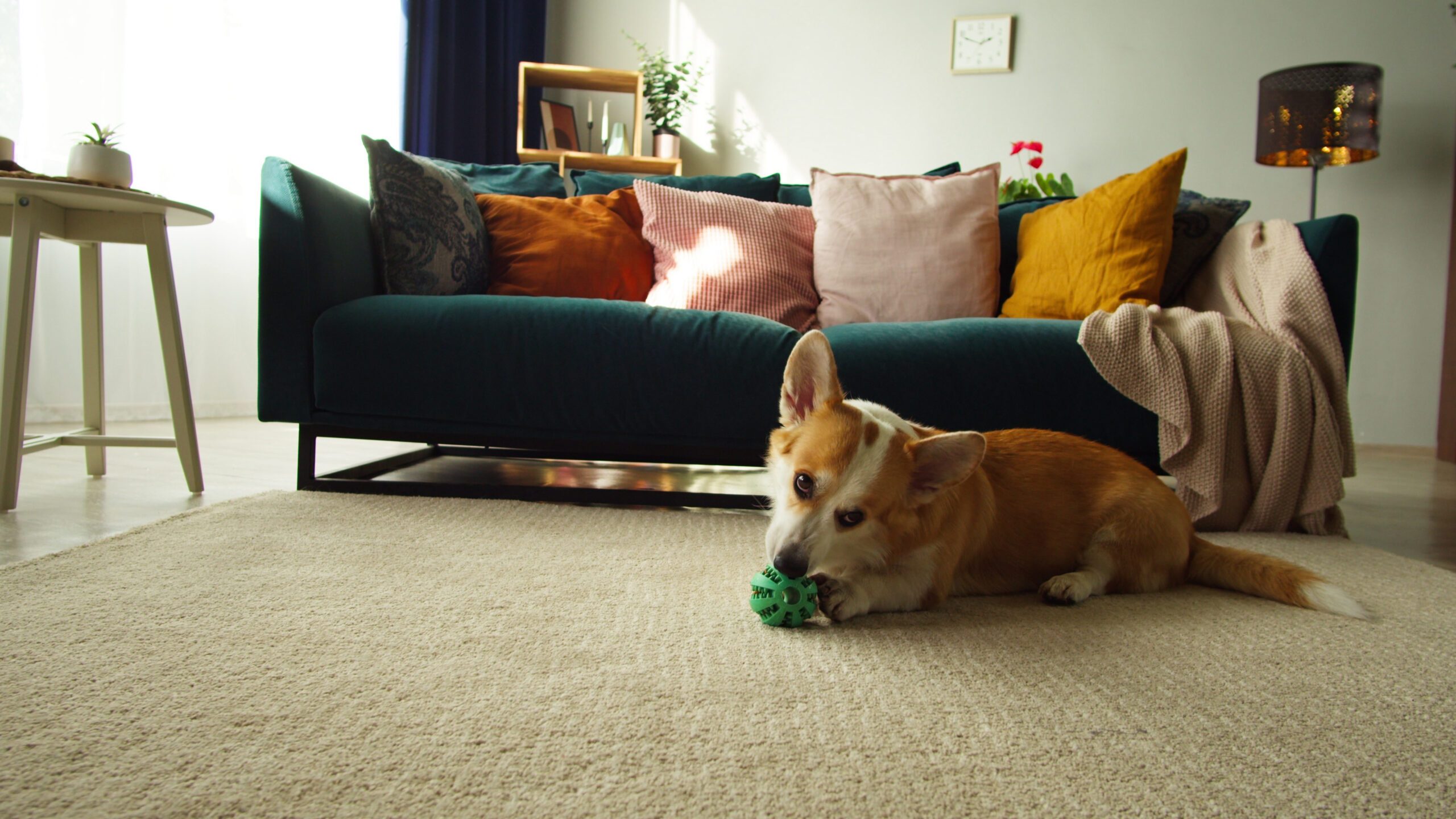Building Confidence and Preventing Separation Anxiety
One of the most important, yet often overlooked, parts of raising a confident, well-balanced dog is how you handle leaving and returning home. The energy you bring to these moments can shape your dog’s emotional development, and directly influence whether they become calm and independent or anxious and over-attached.
Leaving the House Calmly
When you leave the house, the goal is to keep things calm, consistent, and predictable.
Make sure your dog has what it needs before you go, fresh water, safe toys, a comfortable resting spot. Then, simply say goodbye once in a calm, neutral tone and leave. Avoid long goodbyes, sadness, or excitement as your dog will mirror your emotional state.
If you make a big deal about leaving, your dog will sense something unusual or stressful is happening. That heightened energy creates confusion and anxiety, teaching them that your departure is something to worry about. Calm energy communicates confidence and safety.
For new puppies or dogs new to your home, start small. Leave for short periods (30 minutes to 2 hours) and gradually increase time away. Consistency is key, practice calm departures often, so your dog learns this is just part of daily life.
Creating a Safe ‘Alone Area’
For puppies or new dogs, it’s best to begin training independence in a crate, kennel, or small designated space. This becomes their safe “alone area,” where they can relax and self-soothe when you’re not engaging with them.
At first, you can place your pup in this area even while you’re still home, for example, while you’re doing chores or working in another room. The goal is for them to learn that being alone is normal and safe, even when you’re nearby. Avoid sitting where they can watch you without interaction, and don’t respond immediately to barking or whining. These early moments help build independence and trust. Read about Independent Play, this is a great time for that!
If your dog already shows anxious tendencies, choose a secure area that can’t be scratched or chewed. In some cases, stepping out of the house for about 30 minutes can help you resist the urge to intervene, allowing your dog the time it needs to settle. Return only when your dog is calm.
Coming Home Calmly
When you return, resist the natural urge to celebrate or make a big fuss, this is the hardest part for most dog parents! Instead, walk in calmly, greet your dog with a soft “Hi buddy” or a gentle pat, and continue your normal routine.
Over-celebration teaches your dog that your return is the highlight of their day, fueling anxious anticipation when you’re gone. Calm, neutral greetings reinforce that your coming and going are no big deal, just part of everyday life. If your dog has been home for two or more hours, take them out for a potty break right away, but continue to maintain a relaxed, steady demeanor.
The Psychology Behind Calm Energy
Dogs are emotional mirrors. If you show sadness or excitement when leaving, they interpret that as a sign something is wrong or about to happen. When you over-celebrate your return, you teach them that your presence is the only time to feel happy or at ease. This creates emotional highs and lows that can lead to separation anxiety.
Calm, confident leadership shows your dog that both your absence and your presence are safe, predictable, and nothing to worry about. Over time, your dog will begin to relax naturally when you leave, stay calm while you’re gone, and greet you peacefully when you return.
Key Takeaways
- Always leave and return calmly — no excitement, no emotion.
- Make sure your dog has water, toys, and a safe space before you go.
- Start with short absences and build up gradually.
- Use a crate or defined “alone area” to teach early independence.
- Don’t reward anxious behavior — wait for calm before giving attention.
- Keep your greetings short and neutral.
Building a confident, independent dog starts with everyday moments. Calm consistency helps your dog learn that being alone is safe and that your return is simply part of their secure, balanced routine.
